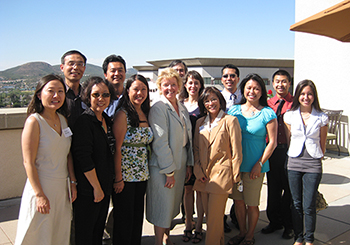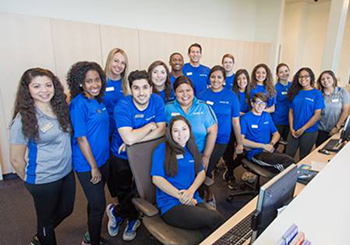Institution Official Designations

AANAPISI in the CSU
Asian American and Native American Pacific Islander-Serving Institutions (AANAPISI) are defined under the Higher Education Act (HEA) as colleges or universities with an undergraduate enrollment that is at least 10 percent Asian American and Native American Pacific Islander. Additionally, at least half of the institution’s degree-seeking students must be low-income. Fourteen out of the California State University’s 23 campuses meet these criteria to compete for AANAPISI grants. AANAPISI funding can be used to strengthen overall institutional capacity and as a pathway for additional federal and private resources to assist underserved communities.
AANAPI-Serving Institutions Map

Hispanic-Serving Institutions in the CSU
Hispanic-Serving Institutions (HSI) are defined under the Higher Education Act (HEA) as colleges or universities where at least 25% of the undergraduate, full-time enrollment is Hispanic; and at least half of the institution’s degree-seeking students must be low-income. Eighteen of the California State University’s 23 campuses meet this criteria, allowing them to qualify for federal funding to expand and enhance educational opportunities for their students, including those of Hispanic descent.
Hispanic-Serving Institutions Map
Minority Serving Institutions (MSI):
HSIs fall under the umbrella of a minority-serving institutions (MSI). In the higher education system of the United States, MSI make up a category of educational establishments (federally recognized Title IV colleges and universities) based on enrollment criteria (typically the percentage of enrolled minorities at a particular school). Such schools are eligible for federal funding under Title III of the Higher Education Act of 1965. Until 2007, no federal legislation existed concerning Asian American and Pacific Islander (AAPI) Serving Institutions. The College Cost Reduction and Access Act of 2007 made history, because it federally recognized the existence of Asian American Pacific Islander (AAPI) serving institutions, making them eligible to be designated as minority serving institutions.
The seven categories of MSI are as follows:
- Historically black colleges and universities (HBCU): Institutions founded prior to the enactment of the Civil Rights Act of 1964 that were created primarily to educate African Americans.
- Black-serving non-HBCUs: Institutions that do not meet the legal definition of HBCUs, but where African American students amount to at least 25% of the total undergraduate enrollment, while other minority groups each constitute less than 25% of total undergraduate enrollment.
- Hispanic-serving institutions: Institutions in which Hispanic students amount to at least 25% of the total undergraduate enrollment, while other minority groups each constitute less than 25% of total undergraduate enrollment.
- Asian Pacific Islander-serving institutions: Institutions in which Asian Americans and Pacific Islanders (API) students constitute at least 25% of the total undergraduate enrollment, while other minority groups each constitute less than 25% of total undergraduate enrollment.
- American Indian-serving institutions: Tribal colleges and universities (TCUs) or institutions that are not HBCUs/TCUs but in which American Indian/Alaska Native students constitute at least 25 percent of the total undergraduate enrollment, while students in each of the other minority groups constitute less than 25 percent of the total undergraduate enrollment.
- Other minority-serving: Institutions in which minority students constitute at least 50 percent of the total undergraduate enrollment, but do not fit any of the above categories.
- Non-minority-serving: Institutions that do not meet any of the criteria described above.